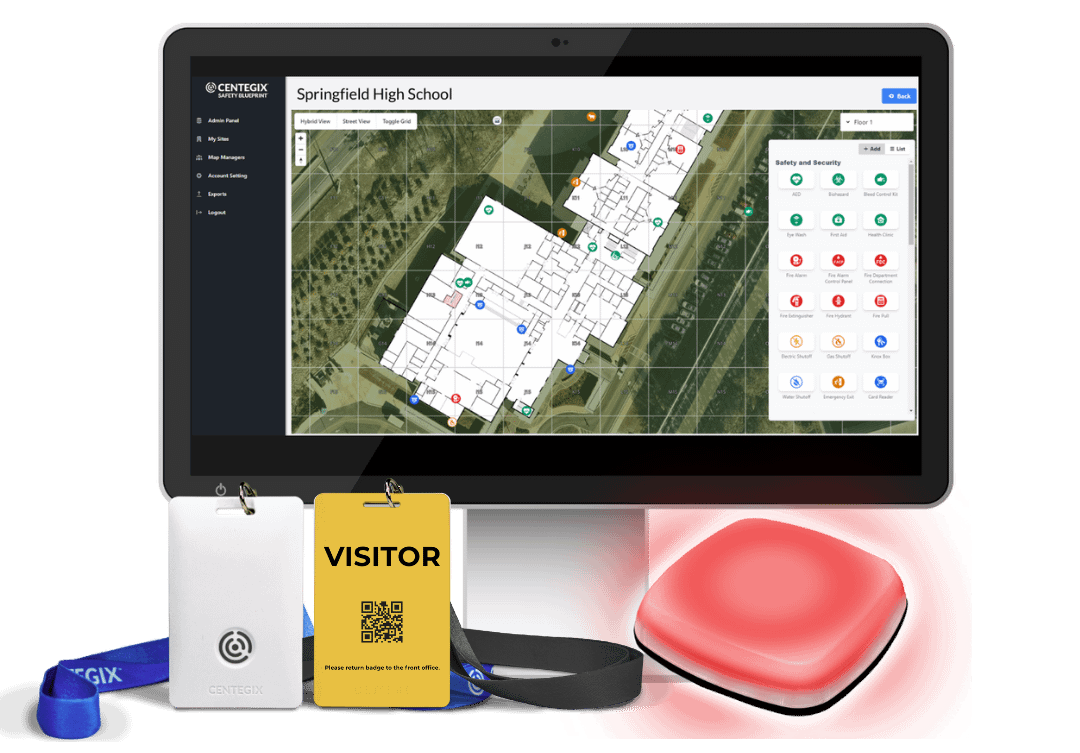School safety is about more than guarding against disruption. It includes creating a culture where the entire school community thrives. Establishing a safe school environment is a strategic effort that requires district commitment and investment.
During the edLeader Panel “Trends in School Safety: How Districts are Creating Safer Learning Environments,” current and former district leaders shared perspectives on school safety issues and steps they have taken to implement school safety policies and procedures.
Trends and Impact: Safety Factors
The 2024 National Educator Survey Report: School Safety Data Findings and Insight, produced by the safety solutions provider CENTEGIX, highlighted school safety issues educators and administrators indicated in a national survey. The findings showed that school safety affects student achievement, influences staff retention and recruitment, and impacts instructional hours, two of which are lost weekly to incidents.
The panelists described circumstances (mirroring these data) that have contributed to disruptive behaviors. Key among them are:
Mental Health Challenges
Post-COVID, students returned to school with heightened mental health challenges. The isolation, the amount of screen time, and the absence of socialization took their toll—on an increase in suicide among young people and escalated physical altercations, for example. Learning loss was center stage, but not students’ social-emotional well-being, affecting their school transition, academic performance, and overall behavior.
Societal Events
External events where negative behavior is at play—people acting out on airplanes, congressional members interacting poorly, local community violence, and disrespect for authority—can influence student behavior and how they navigate disagreement or discontent.
Strategically Creative Solutions
Strategically addressing school safety is essential to streamlined, efficient, and accessible approaches to incident responses. For the panelists, strategic plans and budget allocations reflected enhanced safety measures and spoke to the crucial investments districts were willing to make in safety solutions.
Expanding the concept of safety is the first step in finding solutions. Panelists noted that safety is not limited to violent and related disruptive behaviors but also encompasses emotional well-being, the physical environment, interpersonal relationships, and even medical emergencies.
The panelists presented several solutions to safety issues they have successfully implemented.
Creating Respectful and Safe Environments
Chief among the strategies is creating an overall school environment where students and staff feel safe, respected, and that they belong. Partnering students with one trusted adult, relationship building, and coaching are examples of approaches that undergird school safety. Listening to and addressing staff concerns and feelings about their safety is also critical in developing initiatives that ultimately help to retain teachers. A safe environment also addresses students’ socio-emotional needs and can include mental health services and universal screeners to provide behavioral support where needed.
Safety Technology
Another approach is partnering with safety solutions providers that offer schools and districts tech tools that immediately address safety concerns and reinforce existing safety measures.
The panelists’ schools and districts partnered with CENTEGIX, providing their districts with the Crisis Alert Badge, which rapidly alerts staff and responders to adverse situations. The system enables staff to activate a campuswide alert using multiple audio and visual notifications to communicate that the school is under threat. During an incident, strobe lights flash in every room and hallway, instructional messages appear on school network devices, and an intercom message alerts the entire school.
Panelists emphasized that the system empowers teachers and staff to manage situations that could spiral out of control.
Changing the Physical Environment
In Jacksonville School District 117 (IL), Superintendent Steve Ptacek explained that building construction and school renovations include safety measures. New schools, for example, were afforded bullet-proof films on windows and doors. In renovated schools, the reduction of physical elements that raise tensions, like narrow doorways where students bump into each other, and the inclusion of elements, like lighting, enhances student behavior and creates a more focused academic environment.
Learn more about this edWeb broadcast, Trends in School Safety: How Districts are Creating Safer Learning Environments, sponsored by CENTEGIX.










